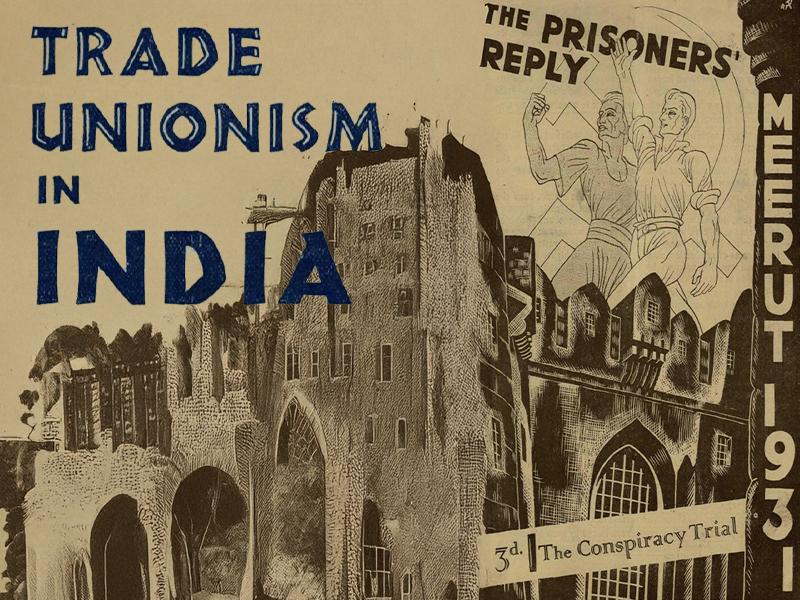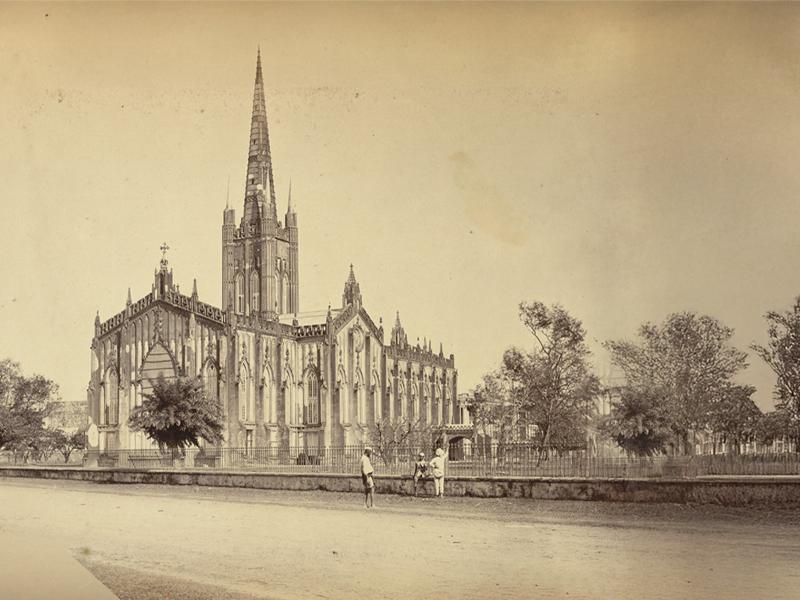In 1858, large swathes of the Indian subcontinent were officially subjugated under the British Crown and became known as the British Raj (translating literally in Hindi to ‘British Rule’). This was the culmination of many decades of British encroachment on the territories of the native Mughal and Maratha Empires in the region, and marked new era of brutal colonialism and incompetent administration which had first manifested almost a century before.
Our updated collection, The East India Company: Laying Foundations for the British Colonial Domination of India, 1752-1774, covers the most pivotal period of British forays into the Indian subcontinent, during which the East India Company (EIC), acting as sovereign representative of the British Crown, gradually defeated the native Mughal and Maratha Empires and laid claim to the vast resources and labour power of the Indian subcontinent.
The East India Company: Origins
The East India Company was originally formed by a group of colonial merchants interested in breaking the monopoly of trade that Spain and Portugal held in the East Indies. The company's first foray into India was in 1612, when British merchants met with Mughal Emperor Jahangir and established a treaty that gave them limited use of land and resources in exchange for European goods. Initially, the EIC had to play second fiddle to the more established European powers. However, over the course of the 17th century, the EIC scored a series of victories over European rivals with trading interests in the region and had lucrative roots in the cotton, silk, indigo dye, saltpetre and tea industries.
In the late 17th century the East India Company was invested by decree of King Charles with the ability to pursue autonomous territorial acquisitions and to command fortresses and troops. The initial motive for this was so that the EIC could expand commercial production through building new factories, and protect those new investments from colonial rivals that might threaten the security of their trade. However, as often is the case with unchecked power, the EIC would transform the nature of this defensive decree into an offensive one. Expansionist ambitions quickly brought the EIC into conflict with the previously friendly Mughal Empire. Tensions reached a head when English pirate Henry Every attacked and looted the Grand Mughal Fleet on a return pilgrimage from Mecca. Furious Emperor Aurangzeb ordered attacks on EIC factories and threatened to put an end to all English trading in India. However, no Mughal Emperor could stop the rising tide of British influence on the Indian subcontinent.
From Mughal to Maratha: 1700s-1750s
As stated above, the Mughal Empire had first facilitated British influence in the region in 1612, enticed by new access to European goods. The Mughal Empire had largely dominated the region since the establishment of their imperial structure in 1600. The Empire reached its zenith under Emperor Aurangzeb in 1700, controlling most of modern day India whilst facilitating European powers' trade. Factional rivalries, corrupt governance and economic issues contributed to a rapid decline and disintegration of the Mughal Empire. By the mid-18th century, the Maratha Empire had swallowed much of the old Mughal Empire and was now the pre-eminent power on the Indian subcontinent. This period of collapse and transition first presented the British East India Company with the opportunity to cross the divide from commercial enterprise to political administration of Indian regions.

Clive’s Coup: 1756-1765
The political situation in the Indian subcontinent during the 1750s was complex. The East India Company, who had long been the pre-eminent commercial power of the region, was being increasingly challenged by their French counterpart. One of the final independent Mughal Nawab’s in India was Siraj-ud-daulah, who controlled the small but wealthy kingdom of Bengal. He came to power in 1756 and became increasingly suspicious of the massive profits that European companies were making in India. Amidst ongoing hostilities between British and French settlements, he ordered both sides to stop upgrading their settlement and forts’ defenses. When the British refused, he occupied British holdings in Calcutta and this led to the horrific ‘Black Hole of Calcutta’ incident, in which over 120 British prisoners were crammed into a prison cell meant to hold only 6.
This perceived aggression led Company Commander Robert Clive and his troops to retake Calcutta and advance against the French settlement of Chandannagar. Nawab Siraj was furious upon learning of this, and started secret negotiations with France to strike back against the British. However, Nawab Siraj was to fall foul of a conspiracy amongst his own court, and this gave the British the unique opportunity to establish de facto rule in the wealthy Bengal region. Robert Clive made a secret pact with one of Siraj’s commanders, Mir Jafar, who promised not to attack the British if he were to be installed as Nawab after Siraj was deposed. True to his word, at the Battle of Plassey in 1757, Mir Jafar and his troops did not engage with the East India Company forces’, resulting in a swift defeat for Nawab Siraj.
In the aftermath Robert Clive installed Mir Jafar as Nawab of Bengal, who quickly realised the gluttonous British force that he had unleashed on the region. The ambitions of the East India Company seemed to have no bounds and Jafar soon tired of playing puppet to the likes of Clive and his peers. By 1759, he was actively seeking military help from the Dutch in order to dislodge the British vice that he found himself in. Ultimately, the British defeated the Dutch and consolidated their hold over Bengal, deposing Mir Jafar and with it the hopes of ridding Bengal of the increasingly parasitic East India Company.
It was in 1765 with the Treaty of Allahabad, observed by Mughal Emperors and Robert Clive, that finally sealed the political and constitutional power of the East India Company in Bengal and beyond. The treaty allowed the EIC to collect taxes from the people of Bengal, Bihar and Orissa and stated that the EIC would protect Mughal Nawab’s from outside attack providing they paid for the troops’ service. This finally meant that the Bengali Nawab ruler was fully dependent on the British for security and finances. This marked a watershed moment in the history of British influence in India, as the East India Company crossed from commercial to political and administrative power. Moreover, this was just the start, with the East India Company about to flex its commercial and political muscle, systematically expanding into more and more regions of modern day India and Pakistan.
By the early 19th century, the East India Company had defeated the Maratha Empire and goods flowing in and out of the region accounted for half of the world's total trade. This gave massive profits to those involved in the EIC in both India and Great Britain. The Company established a monopoly over certain products, meaning that they held exclusive rights of trade, fixed at certain non-negotiable prices. The free market ideas of Adam Smith would eventually lead to the dismantling of the EIC’s monopoly but not before vast wealth had been amassed at the hands of its directors and officials.
Clive’s Death and Legacy
After Clive’s military success in seizing Bengal, as demonstrated through the documents of this collection, his time as Governor of Bengal was ruthlessly exploitative and callous towards the native population. His actions in Bengal seemed to be motivated by only one desire, to plunder his new colonial possession and convert this to personal wealth. Corruption within the East India Company was rife and taxes levied on the rural Bengali population caused considerable hardship. This culminated in a great famine between 1769-1773, with upper bracket estimations alleging that this disaster killed nearly 3 million rural Bengalis. Generally, the EIC’s rule over the Indian subcontinent was characterised by widespread corruption and looting, pushing the local populace into extreme poverty.
Clive even proved a controversial figure amongst his own countrymen, with the British Parliament putting him on trial in 1772 as the Crown became increasingly interested in the affairs of the East India Company. He vehemently denied all allegations against him, stating that: “I stand astonished at my own moderation”. This was perhaps a testament greater to the unchecked nature of power in the East India Company, than any saintly moral compass held by Clive. Parliament absolved him of any wrongdoing but his subsequent depression and suicide in 1774 perhaps suggest his crimes in India weighed heavily on him. He left behind a fortune of over £33 million.
Modern assessments of Clive’s legacy have not been kind. He has come to embody everything that was cruel and exploitative about the East India Company’s rule in India and Pakistan. Historian William Dalrymple has gone as far as labelling Clive an ‘unstable sociopath’ and ‘corporate predator’, penning an article in The Guardian calling for the removal of his statues in Britain. This was a theme that picked up steam in 2020, with tens of thousands of people calling for the removal of his statues in Shrewsbury Square and Whitehall. Nevertheless, despite public pressure, his statue remains, casting a gloomy shadow over the white stone buildings surrounding him. These debates are a stark reminder that Britain is yet to reckon with its colonial past, showing an instinctive desire to rehabilitate the dark characters that contributed to the material success of ‘Great’ Britain.



1879-1910_Card_1690882488-800x600.jpg)





